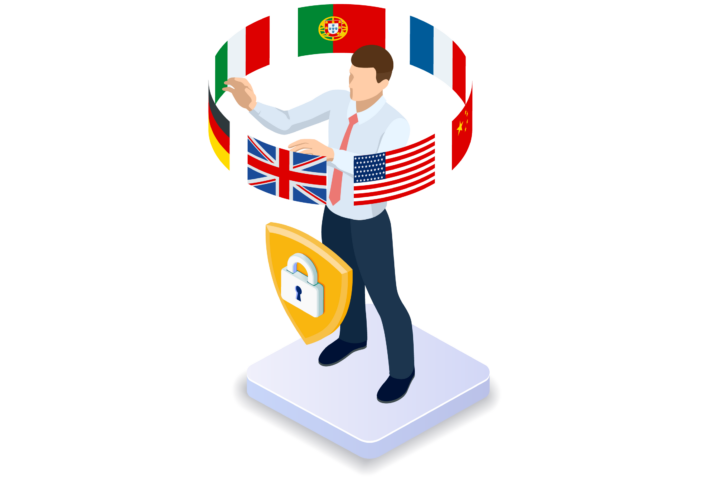Humans and machines are melding in hybrid solutions that improve the service experience
To succeed in today’s globalized business environment, companies need to grab customers by their tongues. Not literally, of course, though the thought has no doubt crossed the mind of every support agent. And probably reciprocated by each customer. Multilingual support is an essential part of any company’s success and key to higher customer satisfaction. Breaking language barriers is crucial to achieving this goal.
In Statista’s 2018 survey of U.S. customers, 44 percent of respondents terminated relations with a business due to dissatisfaction with its support. A report in the same year from NewVoiceMedia rang up the total cost for poor customer support at a cool $75 billion annually. Companies offering support in multiple languages stand to gain in loyalty and reach by offering native language support. That may seem obvious, but let’s dive deeper — into the benefits of multilingual solutions.
Building Loyalty by Speaking Each Customer’s Language
Providing support in customers’ native language can improve the customer experience by allowing them to communicate with ease and confidence, leading to quicker solutions. When customers feel more comfortable communicating in their native language, this leads to higher levels of satisfaction and loyalty, avoiding the frustrations which can arise when native-language support is unavailable.
An ICMI study shows that 71.5% of customer service leaders report that providing support in a native language increases satisfaction. And 74% of customers, Common Sense Advisory reports, are more likely to use services or buy again when post-sale support is in their language. It stands to reason: customers who feel heard and better understood are more likely to stay loyal, increasing those all-import retention KPIs.
Expanding Reach Globally by Crossing Linguistic Borders
Breaking language barriers help companies to expand their reach globally, opening new markets and customer segments. Companies can apply technology such as machine translation or human-based translation services to provide multilingual support. By using Neural Machine Translation (NMT) and other advanced machine learning algorithms, companies can provide real-time translation, making it easier for customers to communicate with support agents in their native language. Online availability of native language support content is a key factor in sales and marketing success.
Improving the Efficiency and Productivity of Support Teams
Implementing multilingual support, especially with NMT, can help to improve the efficiency and productivity of customer support teams. With the use of language translation software and other Automated Translation tools, teams can more quickly and easily respond to customer inquiries in multiple languages. This can cut response times and improve the customer experiences.
Optimizing Translation Accuracy by Localization Software to Aid Humans
Language localization in software is another important factor in breaking language barriers in customer support. Companies can use Machine Translation APIs, now available from a multiplicity of software vendors. These and an ever-increasing arsenal of AI-powered language tools are ensuring that customer support content is translated accurately and contextually, taking into account diverse factors like local customs, slang, and other cultural nuances.
This is increasingly a melding of human professionals and machines. For example, a company might use machine learning algorithms to translate its product documentation into several languages, and then work with local translators to refine the translations and ensure they are appropriate to the norms of the culture. That doesn’t mean that human translators are useless. They’re just secondary. But coming in second, is not inferior, just later in the process.
As a rule, human-machine translation hybrid solutions result in more accurate translations. These solutions blend the speed and efficiency of machine translation with the accuracy and culturally sensitive nuance of flesh-and-blood translators.
Conclusion: Global Customers are Expecting Ever-Smarter Linguistic Support
Breaking language barriers in customer support is more essential than ever for companies seeking to expand their reach internationally. Leveraging advanced translation technology, companies can expand multilingual support at scale, increasing customer satisfaction and loyalty, in more languages and thus more countries.
Companies investing in language translation software, machine learning algorithms, and other automated translation tools can reap significant benefits in terms of efficiency and productivity. To thrive in today’s global business environment, there’s no going back to imagined “good old days” where translation was heroically done by unassisted human translators and interpreters rushing from site to site.
Without a doubt, NMT has contributed to more powerful and natural-sounding translation abilities. Customer support is leapfrogging onto a different plane. Instead of lamenting the threat of ever-smarter machines, better to embrace the liberating power of intelligent software to break down language barriers and deliver ever-higher levels of multilingual customer support.






